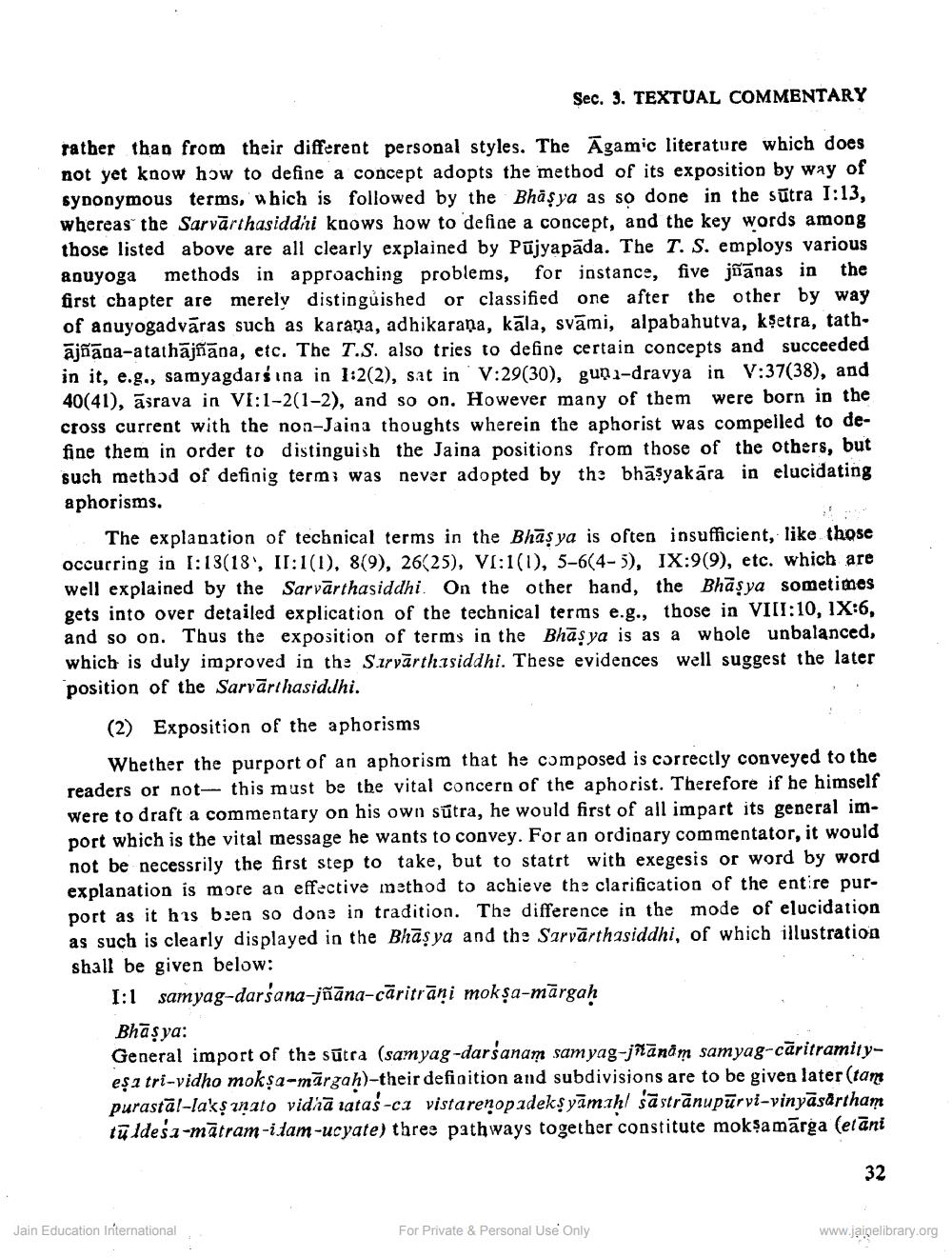________________
Sec. 3. TEXTUAL COMMENTARY
rather than from their different personal styles. The Āgamic literature which does not yet know how to define a concept adopts the method of its exposition by way of synonymous terms, which is followed by the Bhäşya as so done in the sūtra 1:13, whereas the Sarvārthasiddiri knows how to define a concept, and the key words among those listed above are all clearly explained by Pujyapāda. The T. S. employs various anuyoga methods in approaching problems, for instance, five jñanas in the first chapter are merely distinguished or classified one after the other by way of anuyogadvāras such as karana, adhikarana, kāla, svāmi, alpabahutva, ksetra, tathājñāna-atathājñāna, etc. The T.S. also tries to define certain concepts and succeeded in it, e.g., samyagdarsina in 1:2(2), sat in V:29(30), guna-dravya in V:37(38), and 40(41), āsrava in VI:1-2(1-2), and so on. However many of them were born in the cross current with the non-Jaina thoughts wherein the aphorist was compelled to define them in order to distinguish the Jaina positions from those of the others, but such method of definig term; was never adopted by the bhāsyakära in elucidating aphorisms.
The explanation of technical terms in the Bhāş ya is often insufficient, like those occurring in 1:13(18!, II:1(1), 8(9), 26(25), VI:1(1), 5-6(4-3), IX:9(9), etc. which are well explained by the Sarvārthasiddhi. On the other hand, the Bhāşya sometimes gets into over detailed explication of the technical terms e.g., those in VIII:10, 1X:6, and so on. Thus the exposition of terms in the Bhāsya is as a whole unbalanced, which is duly improved in the Survārth. siddhi. These evidences well suggest the later position of the Sarvārthasiddhi.
(2) Exposition of the aphorisms
Whether the purport of an aphorism that he composed is correctly conveyed to the readers or not- this must be the vital concern of the aphorist. Therefore if he himself were to draft a commentary on his own sútra, he would first of all impart its general import which is the vital message he wants to convey. For an ordinary commentator, it would not be necessrily the first step to take, but to statrt with exegesis or word by word explanation is more an effective method to achieve the clarification of the entire purport as it has bien so done in tradition. The difference in the mode of elucidation as such is clearly displayed in the Bhāşya and the Sarvārthasiddhi, of which illustration shall be given below:
I:1 samyag-darsana-jñāna-caritrāņi mokşa-mārgah Bhāşya: General import of the sūtra (samyag-darśanam samyag-jñānam samyag-cāritramityeşa tri-vidho mokşa-mārgah)-their definition and subdivisions are to be given later (tam purastāl-lakşınato vidrā natas-c1 vistarenopadeks yāmahl śāstrānupūrvi-vinyāsartham tū ldeśa-mātram-idam-ucyate) three pathways together constitute moksamārga (etāni
32
Jain Education International
For Private & Personal Use Only
www.jainelibrary.org




